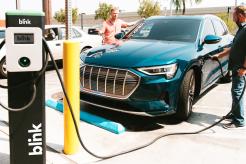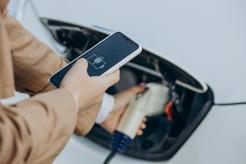A few years ago, a friend visited an Amish family on their farm. Bucolic pastures, horses grazing, children playing – the stereotypical setting you’d see in Amish country tourist brochures. That is, until the owner pointed out his invention – a device that generated electricity from burning wood and provided light for his home.

Image via Freepik
After she recovered from the shock of seeing an electrical device on an Amish farm, my friend wondered, “Could such a device enable off-grid EV charging as well as lighting a home?” The answer is a resounding “yes.” Although many off-grid solutions couldn’t power Level 2 chargers, let alone a DC fast charger, they do provide alternate solutions for people who choose to live off-grid or need to survive after a power outage. Here are some of the solutions to keep in mind the next time the power goes out.
1. Off-Grid EV Charging with a Wood Gasifier
Before natural gas became widely available, 19th-century scientists invented a process to convert biomass – such as pellets, wood, or twigs – into an “energy-rich gas…for heating, cooking, or to power a generator,” as World Water Reserve’s Jeremiah Zac notes. A wood gasifier collects the gas that usually goes up into the air during the burning process, purifies it, and then converts it into electrical energy.
In other words, a gasifier can serve as a generator without much of the pollution a gasoline- or diesel-powered generator can. Although such a generator can’t produce enough energy to power a Level 2 or higher charger, it certainly can charge an EV, albeit slowly – just as would your wall outlet.
2. Off-Grid EV Charging with Solar Power
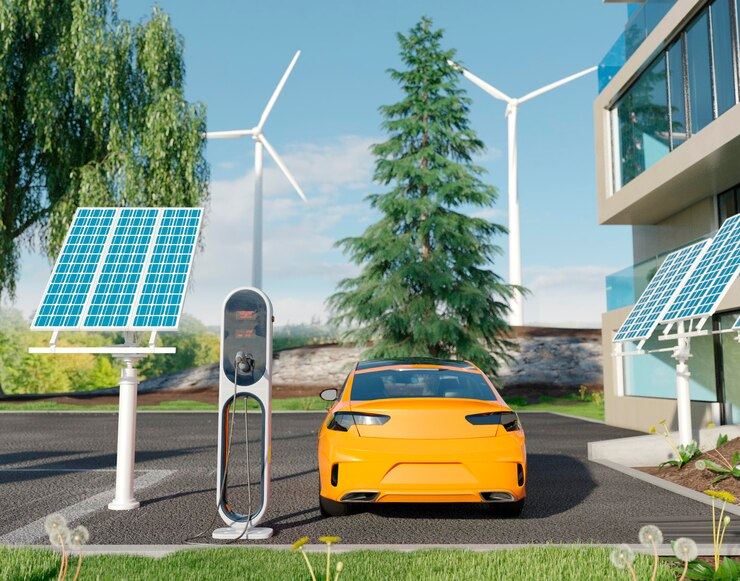
Image via Freepik
While solar panels are popular choices for heating people’s homes and providing backup electrical power, they’re also able to charge EVs, as Hackaday’s Bryan Cockfield points out. However, the right inverter, Cockfield says, is essential for success in charging EVs while off-grid if you want to use solar panels.
Residential Solar Panel Systems
To use photovoltaic (PV) solar panels to charge your EV, you need an inverter that can produce at least 3.5 kW. Additionally, you need to balance the power from your solar panels to keep your battery from strain.
Although solar panels are expensive, they can save you plenty of money over time. A home solar panel system can last for 25-30 years, provided you keep up with its maintenance schedule. And, if you only go off-grid when there’s a power outage, you usually have an option to feed any unused electricity back into the grid, earning you credits toward your next electric bill.
Using PV panels also allows you to use both Level 1 and Level 2 chargers, letting you charge faster than if you used only a gasifier to produce the electricity to power your EV. However, if you’re also using your solar panels to provide your home with electricity, you’ll need to install at least eight to 12 more panels to get enough kilowatts to fully charge your car.
EV batteries vary in their charging needs. So, be sure to install enough solar panels to accommodate your car’s battery requirements. If you plan to buy an EV that “eats” more energy than your current model – or if you have frequent visitors who drive EVs, install enough to meet your future needs as well.
Portable Solar Panel Systems
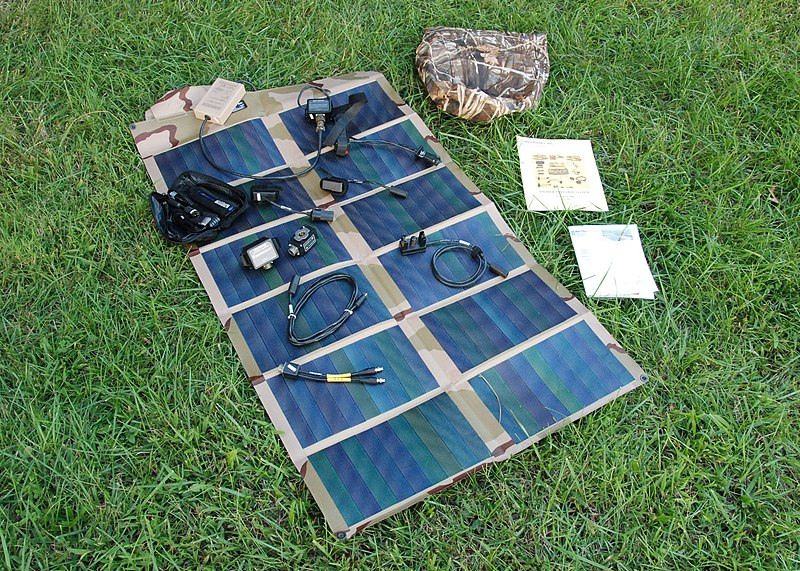
Image via Wikimedia Commons
When you’re on the road and want to go off-grid, a portable solar panel system is the answer. To charge an EV, though, you’ll also need a portable power station to pair it with.
The solar panel collects the energy from the sun. Then, it sends the energy to the portable power station, which acts as a battery to store the energy until you’re ready to plug in your EV or another device. Some models, however, require special adapters to charge an EV – so be sure to ask when you’re shopping for a power station.
Power stations are heavy, though. You’ll want something with wheels so you can easily load it onto your vehicle and roll it to your campsite.
Semi-Portable Solar Panel Systems
Campgrounds, disaster relief organizations, or construction companies working in remote locations might well consider setting up a standalone off-grid charging station for their EV fleet vehicles. Although these setups aren’t something a camping enthusiast would carry around behind their RVs, they are fairly easy for commercial vehicles to haul to and deploy in remote locations. Even better, they can accommodate even DC fast charging when connected to three or more other units.
3. Charging EVs Off Grid with a Wind Turbine
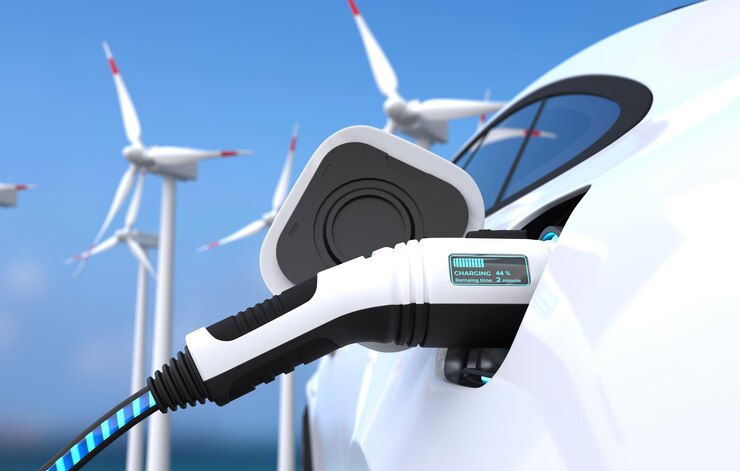
Image via Freepik
Although they’re not as common as solar EV charging systems, wind turbines, too, can be a part of the off-grid EV scene. Paired with an EV charger, a wind turbine can provide enough power to charge an EV.
Even on days when the wind barely blows, an off-grid system can store energy from windy days in a battery. That way, no matter how still the air is, off-grid EV drivers can be sure they’ll have enough power to get to where they need to go.
4. Off-Grid EV Charging with Battery Storage
No matter what your off-grid power source is, it pays to invest in battery storage to ensure that you’ll have power when you need it. Even if you’re not planning to go off-grid, there’s always the possibility of a power outage from a storm or other natural disaster. Having a storage battery already charged up gives you and your loved ones the assurance that you can get away at a moment’s notice.
Discover More Innovative Charging Technologies at the Next EV Charging Summit Event
Whether you’re interested in off-grid or grid-connected EV charging, you’ll discover that a whole world of EV charging innovation awaits you at the next EV Charging Summit event. There, you’ll hear from some of the industry’s finest minds and be able to put their knowledge to work for your EV charging business.
Get a jumpstart on your competition as you soak up the information you need to put you at the head of the pack. Reserve your place at the Summit today!


